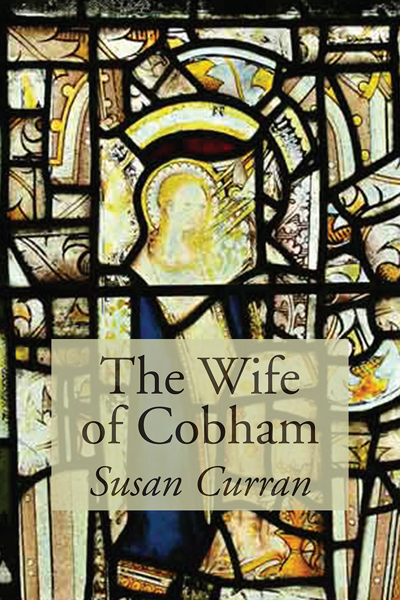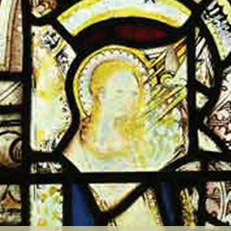 In Chrishall Church there is a large brass that covers (or once covered – it has probably been moved) the tombs of Sir John de la Pole, who died probably in 1380, and his wife Joan (née Cobham), who died probably ten years or so later. And the stone effigy that is also to be found in the church is thought by some to represent Sir John’s mother Margaret, who probably died at around the same time.
In Chrishall Church there is a large brass that covers (or once covered – it has probably been moved) the tombs of Sir John de la Pole, who died probably in 1380, and his wife Joan (née Cobham), who died probably ten years or so later. And the stone effigy that is also to be found in the church is thought by some to represent Sir John’s mother Margaret, who probably died at around the same time.
Sir John and his lady were both only children – or at least, the only children of their parents to survive their early childhood, which is all we can be certain of from their era. They had two children who survived infancy, but their son died at the age of 10 or so, so it was his sister, another Joan, who became heir to both their families. Since both the de la Poles and the Cobhams were owners of a great deal of land stretching right across southern England and well into the Midlands, this made young Joan (who also inherited her grandfather’s title, and became Lady Cobham) a very rich woman.
Joan’s brass survives too, but although she was probably born in Chrishall, she was buried not there but in Cobham in Kent, the ancestral home of her mother’s family. Unlike her parents, she lived to a good age (she was about 65 when she died in 1434), and she had an eventful life, which saw her marrying five times.
Author Susan Curran has drawn on those five marriages to write a biography of Joan. Although it is firmly based on fact, she stresses that it is quite different from the biography of a twentieth-century individual, because none of Joan’s own words survive, and only a little is known of her actions. Instead it draws on what is known about the places Joan lived, the men she married and the events she lived through, to give a sense of the kind of life she must have lived.
Joan’s husbands were an eclectic group. Most prominent among them was one of the most notorious men of their age, Sir John Oldcastle (also known in later life as Lord Cobham in right of his wife). Considered by many to be the template for Shakespeare’s Falstaff, he was a friend of King Henry V. He was also a social and religious reformer, in an era when dissent was little tolerated, and although the king granted him a great deal of licence, he eventually overstepped it and was arrested. Famously he escaped from the Tower of London, attempted to set off a major rebellion which would (if it had gone to plan) have seen the king killed and Oldcastle himself put on the throne, failed disastrously, and spent several years on the run before being captured and executed.
Lady Cobham was arrested too, but after Sir John’s death she was quietly freed. One of the questions Susan considers is whether she too was a Lollard, a member of the group of religious radicals which included not just Sir John, but perhaps also one or two of her previous husbands. Did she help Sir John escape from the Tower, and did she help him remain free afterwards? Although the historical record has little to say on the subject, it is quite possible that this daughter of Chrishall quietly played a major part in the events of her time, not just funding radicalism, but supporting it through her own actions.
Susan also uses illustrations to bring a sense of the period to her medieval biographies (this is her third), including photographs of the places that feature, and many of contemporary stained glass. She tries to give some of the sense of a medieval illuminated manuscript, so the pages are full of colour, and although the books are meticulously researched, they are designed to be easy reads for anyone regardless of their knowledge (or lack of it) of the period.
The Wife of Cobham is published 15 June 2016 by the Lasse Press, and is available from bookshops (hopefully Harts in Saffron Walden) or direct from the publishers via www.lassepress.com
Interesting article from the Monumental Brass Society when they visited Chrishall Church back in 2016. See page 264 and onwards for information about the visit and further research on the de la Pole family.


0 Comments